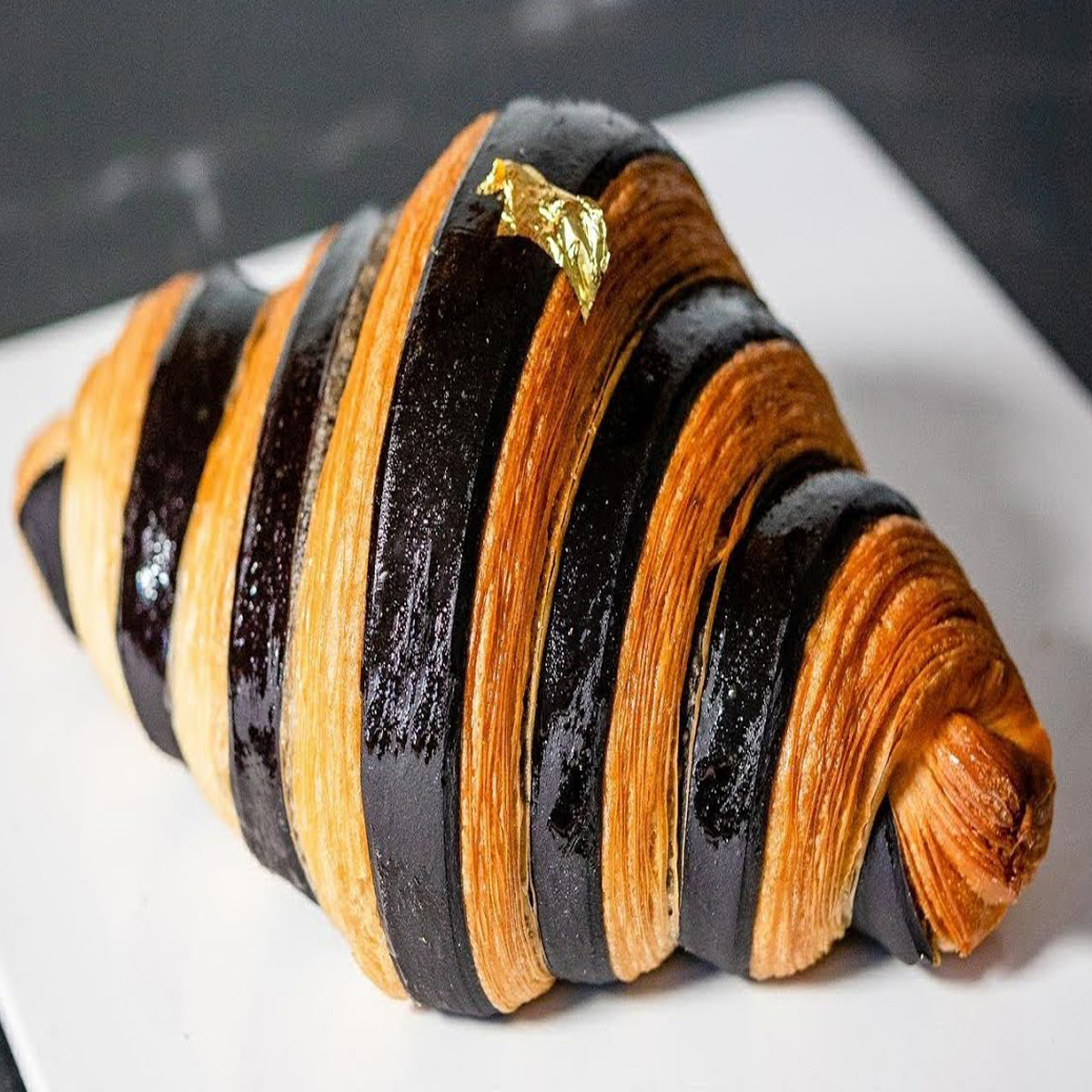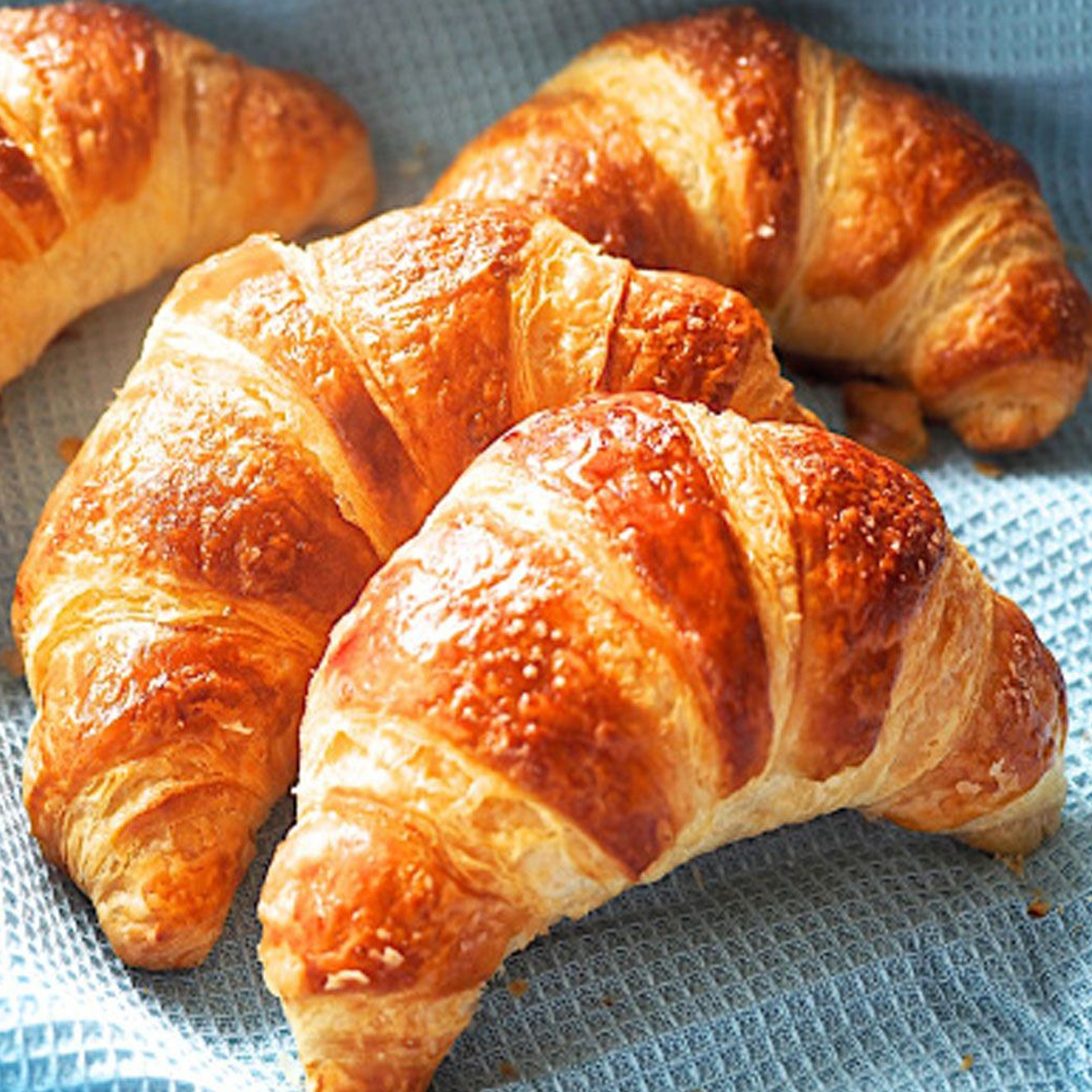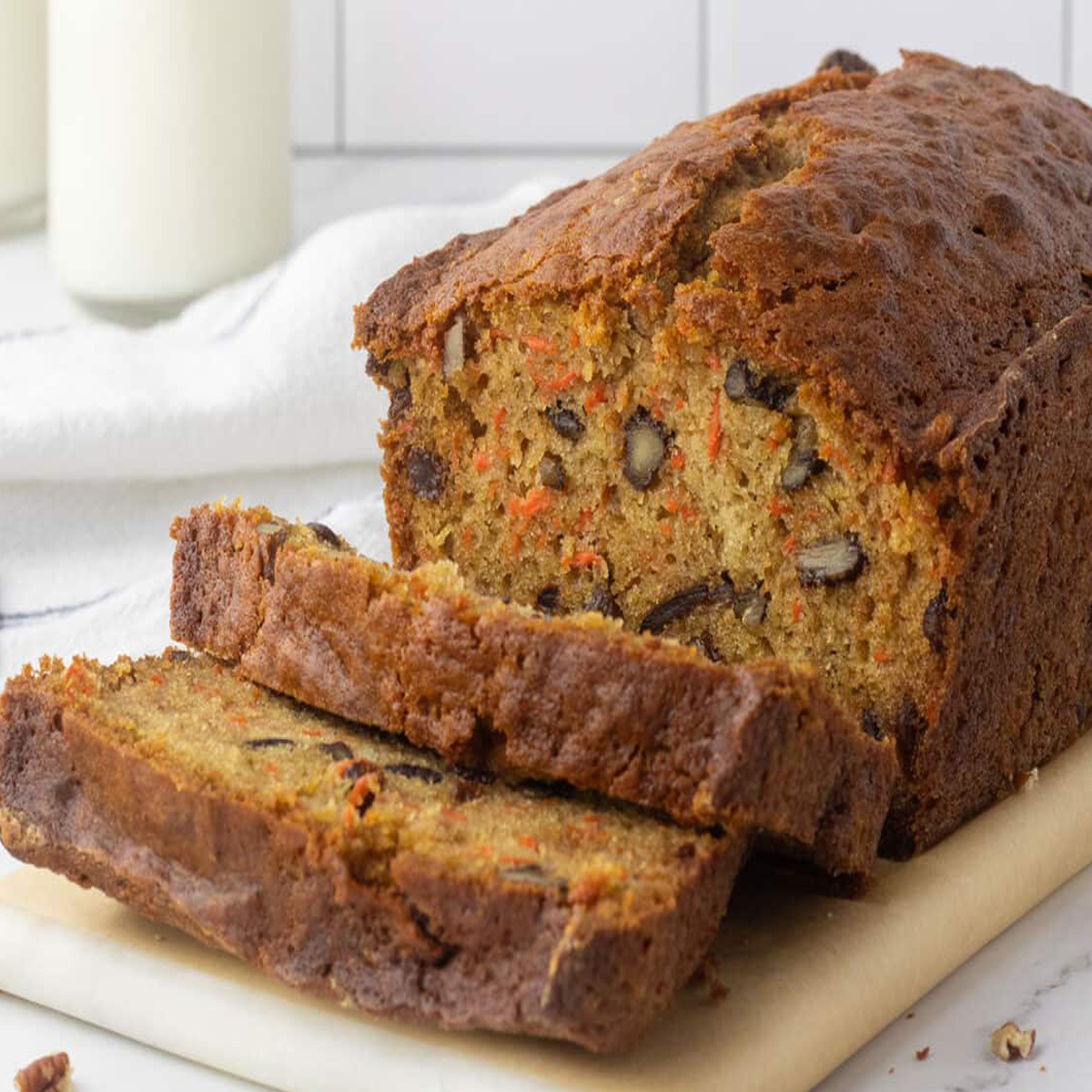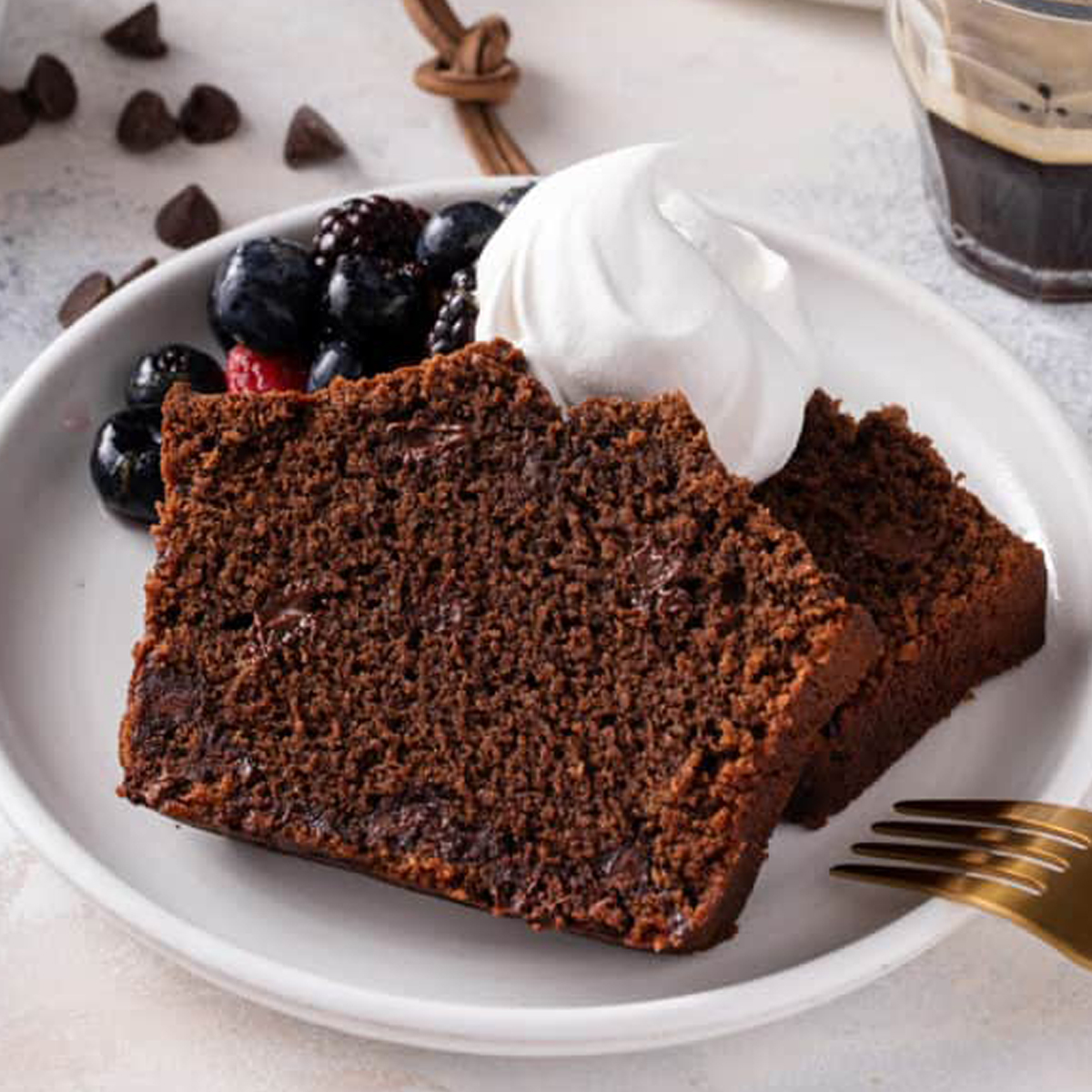The Cross Laminated Croissant is a modern and innovative twist on the classic French pastry that has taken the world of baking by storm. This delightful creation seamlessly combines the rich, buttery layers of a traditional croissant with a unique cross-laminated design, resulting in a pastry that’s as visually captivating as it is delicious.
Imagine biting into a Cross Laminated Croissant and experiencing the perfect harmony of crispy, flaky outer layers and tender, buttery interior. Each bite reveals a symphony of flavors and textures that blend seamlessly, creating a delightful contrast that pastry enthusiasts find irresistible.
In this introduction, we’ll explore the artistry behind the Cross Laminated Croissant, its origins, and what makes it a true masterpiece in the world of baked goods. Whether enjoyed as a breakfast treat or a luxurious snack, the Cross Laminated Croissant promises an extraordinary culinary experience that’s both familiar and wonderfully unique.
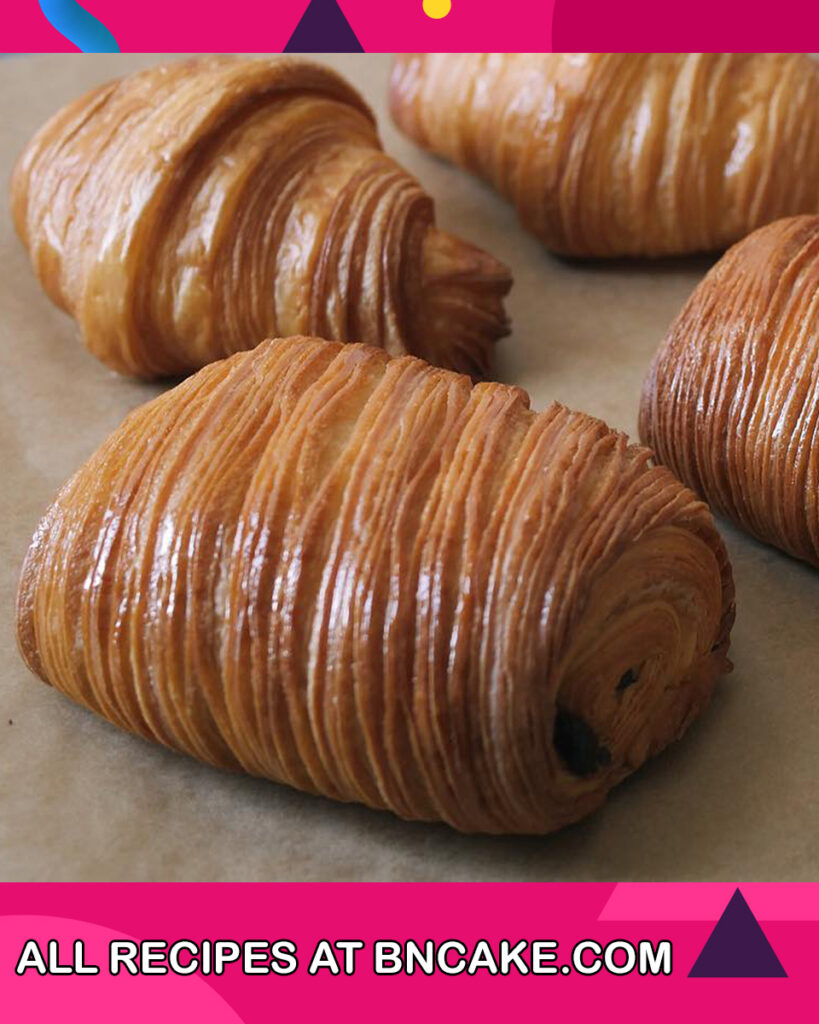
Why You Will Love Cross Laminated Croissant Recipe?
- Unique Presentation: The cross-laminated design of this croissant adds a visually striking element that sets it apart from traditional croissants. Its intricate layers create an eye-catching pattern that makes it an excellent choice for special occasions or as a centerpiece in your pastry selection.
- Delicious Fusion: The Cross Laminated Croissant combines the beloved flavors of a classic croissant with an added layer of complexity. You’ll enjoy the same buttery, flaky goodness while experiencing an intriguing twist in texture and appearance.
- Texture Harmony: This recipe offers an exceptional contrast in textures. The exterior layers are delightfully crispy and golden, while the interior remains soft and tender, creating an exquisite textural balance that’s incredibly satisfying to bite into.
- Buttery Richness: Like traditional croissants, the Cross Laminated Croissant recipe typically includes generous amounts of butter. This results in a rich and indulgent flavor that pairs wonderfully with a cup of coffee or tea.
- Versatile Filling Options: You can customize the filling of your Cross Laminated Croissant to suit your preferences. Whether you opt for chocolate, almond paste, or fruit preserves, the laminated layers will hold and complement your chosen filling beautifully.
- Homemade Elegance: Baking a Cross Laminated Croissant from scratch allows you to bring an air of sophistication and elegance to your home. It’s a rewarding baking project that will impress your friends and family.
- Creative Expression: If you enjoy experimenting in the kitchen, this recipe provides an opportunity for creativity. You can play with different fillings, flavors, and even shapes to create your unique twist on the Cross Laminated Croissant.
- Impressive for Guests: When serving guests, presenting Cross Laminated Croissants demonstrates your culinary skills and attention to detail. They’re sure to leave a lasting impression on anyone who enjoys them.
- Perfect for Special Occasions: Whether it’s a brunch, afternoon tea, or a festive gathering, Cross Laminated Croissants add a touch of elegance to any occasion, making them a versatile and memorable treat.
- Homemade Goodness: There’s something deeply satisfying about enjoying a freshly baked croissant you’ve made from scratch. It’s a testament to your culinary prowess and an opportunity to savor the fruits of your labor.
In summary, a Cross Laminated Croissant recipe offers a delightful fusion of aesthetics, flavors, and textures that elevate the traditional croissant to a whole new level of culinary artistry. Whether you’re a baking enthusiast or simply someone who appreciates a delicious and visually appealing pastry, this recipe is sure to capture your heart and palate.
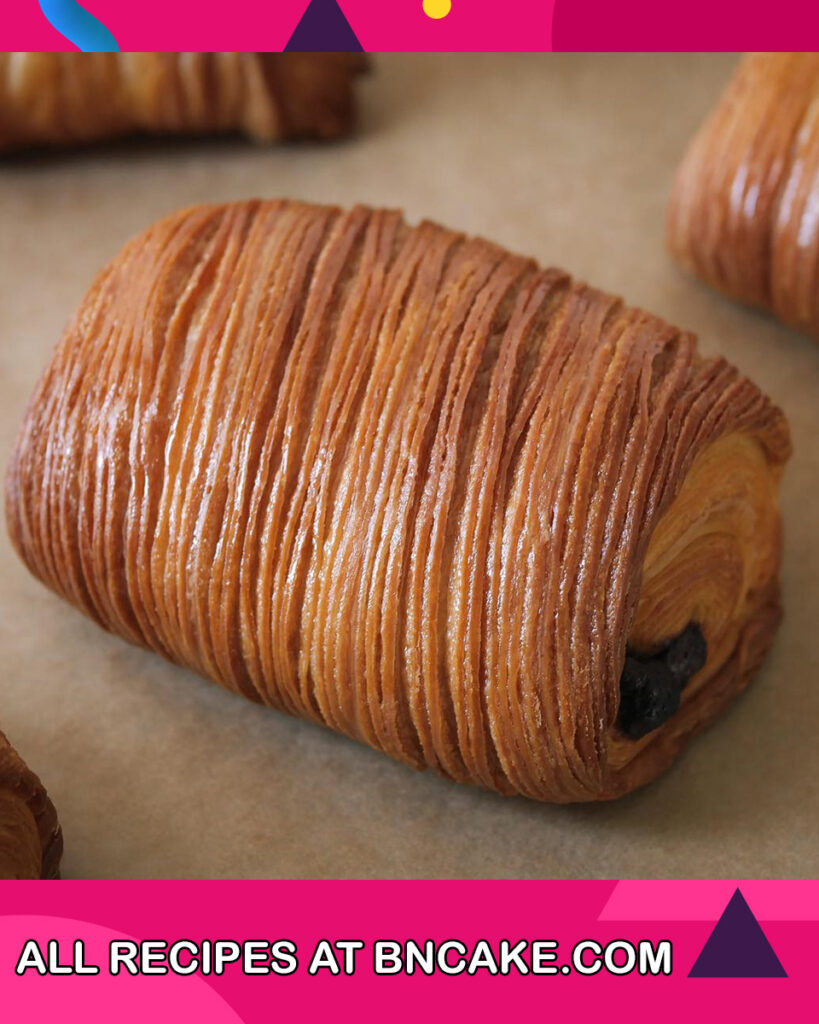
Ingredients For Cross Laminated Croissant
For the Dough:
- 2 1/4 cups (280g) all-purpose flour
- 1/4 cup (30g) bread flour (for added structure)
- 1/4 cup (50g) granulated sugar
- 1 1/2 teaspoons active dry yeast
- 1 1/4 teaspoons salt
- 1 cup (240ml) warm milk (about 110°F or 43°C)
- 2 tablespoons unsalted butter, melted
- 1 large egg, beaten (for egg wash)
- Additional butter for laminating the dough (usually about 1 cup or 2 sticks)
For the Butter Layer:
- 1 1/4 cups (2 1/2 sticks or 285g) unsalted butter, cold
For the Egg Wash:
- 1 large egg, beaten
For the Filling (Optional):
- Filling options can vary, but common choices include chocolate chips, almond paste, or fruit preserves. The quantity will depend on your preference and the size of your croissants.
Additional Equipment:
- Plastic wrap or parchment paper (for wrapping the dough)
- Rolling pin
- Bench scraper or knife (for cutting and shaping)
- Pastry brush (for applying egg wash)
- Baking sheets lined with parchment paper or silicone baking mats
These quantities should yield approximately 12-16 Cross Laminated Croissants, depending on the size you choose to make.
Please note that making Cross Laminated Croissants is a detailed and time-consuming process that involves multiple steps and careful attention to technique. Additionally, the quantity of butter used for laminating the dough is an estimate and may need to be adjusted based on your preference and experience with laminated pastries.
How To Make Cross Laminated Croissant
For the Dough:
- In a large mixing bowl, combine the all-purpose flour, bread flour, granulated sugar, active dry yeast, and salt.
- Add the warm milk and melted unsalted butter to the dry ingredients. Mix until a dough forms.
- Knead the dough on a lightly floured surface for about 5-7 minutes until it becomes smooth and elastic. Form the dough into a rectangle, cover it with plastic wrap, and refrigerate for at least 1 hour or until it’s firm.
For the Butter Layer:
- Place the cold unsalted butter between two sheets of plastic wrap or parchment paper. Roll it out into a rectangle that’s approximately half the size of your dough. Refrigerate the butter layer.
Laminating the Dough:
- Roll out the chilled dough on a floured surface into a larger rectangle, making sure it’s about twice the size of the butter layer.
- Place the cold butter layer on one half of the rolled-out dough, then fold the other half over the butter, enclosing it completely.
- Roll out the dough with the enclosed butter into a larger rectangle again.
- Fold the dough into thirds, like a business letter. This completes one “fold.”
- Chill the dough for 30 minutes, then repeat the rolling and folding process for a total of 3-4 folds, chilling between each fold.
Shaping and Baking:
- Roll out the laminated dough into a large rectangle, then cut it into triangles. Place your preferred filling on each triangle, if desired.
- Roll up each triangle tightly, starting from the wide end, to form croissants.
- Place the shaped croissants on baking sheets lined with parchment paper or silicone baking mats.
Finishing:
- Preheat your oven to 375°F (190°C).
- Brush the tops of the croissants with beaten egg to give them a golden shine.
- Bake the croissants for 15-20 minutes or until they are golden brown and puffed up.
- Let them cool on a wire rack for a few minutes before serving.
Enjoy your homemade Cross Laminated Croissants, a labor of love resulting in a delicious and visually stunning pastry!
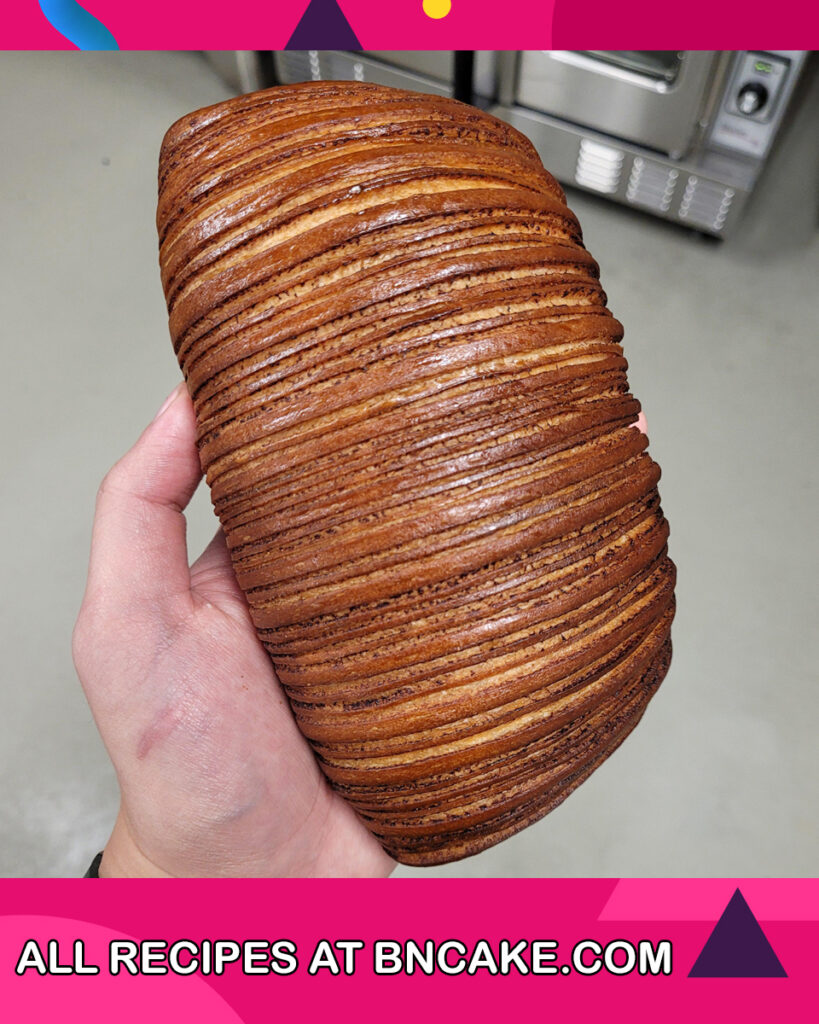
How To Serve Cross Laminated Croissant
Serving Cross Laminated Croissants is a delightful experience, and they can be enjoyed in various ways. Here’s how to serve Cross Laminated Croissants:
1. Fresh and Warm:
- Cross Laminated Croissants are best enjoyed when they are freshly baked and still warm from the oven. The aroma and flavor are at their peak during this time.
2. Plain:
- Serve Cross Laminated Croissants plain, allowing their buttery, flaky layers to shine. They are delicious on their own, and you can savor the richness and texture with each bite.
3. With a Hot Beverage:
- Pair Cross Laminated Croissants with your favorite hot beverage, such as coffee, tea, or hot chocolate. The contrast of the warm pastry with a comforting drink is a classic and enjoyable combination.
4. Breakfast or Brunch:
- Cross Laminated Croissants make an excellent addition to a breakfast or brunch spread. You can serve them with a selection of jams, preserves, or honey for added sweetness.
5. Sweet Fillings:
- Consider filling Cross Laminated Croissants with sweet options like chocolate chips, almond paste, or fruit preserves before rolling them up and baking. These sweet fillings add extra flavor and indulgence.
6. Savory Fillings:
- Get creative by adding savory fillings like ham and cheese or spinach and feta before rolling and baking the croissants. Savory options make for a satisfying lunch or snack.
7. Accompaniments:
- Enhance your croissants with accompaniments like fresh fruit, a dollop of whipped cream, or a scoop of ice cream for a delectable dessert.
8. Presentation:
- Arrange Cross Laminated Croissants on a stylish serving platter or a wooden board for an appealing presentation. Consider dusting them with powdered sugar for an elegant touch.
9. Room Temperature:
- If you’re serving croissants that have cooled to room temperature, consider warming them briefly in the oven for a few minutes before serving to restore their crispness and flakiness.
10. Sharing:
- Share the joy of Cross Laminated Croissants with friends and family. They’re a perfect treat for gatherings, brunch parties, or special occasions.
11. Customize:
- Offer a variety of fillings and accompaniments so that everyone can customize their croissants to their liking. This adds an interactive and personalized element to the serving experience.
Serving Cross Laminated Croissants provides an opportunity to enjoy the layers of flavor and texture in this exquisite pastry. Whether you prefer them plain, sweet, or savory, these croissants are a delightful addition to your dining experience.
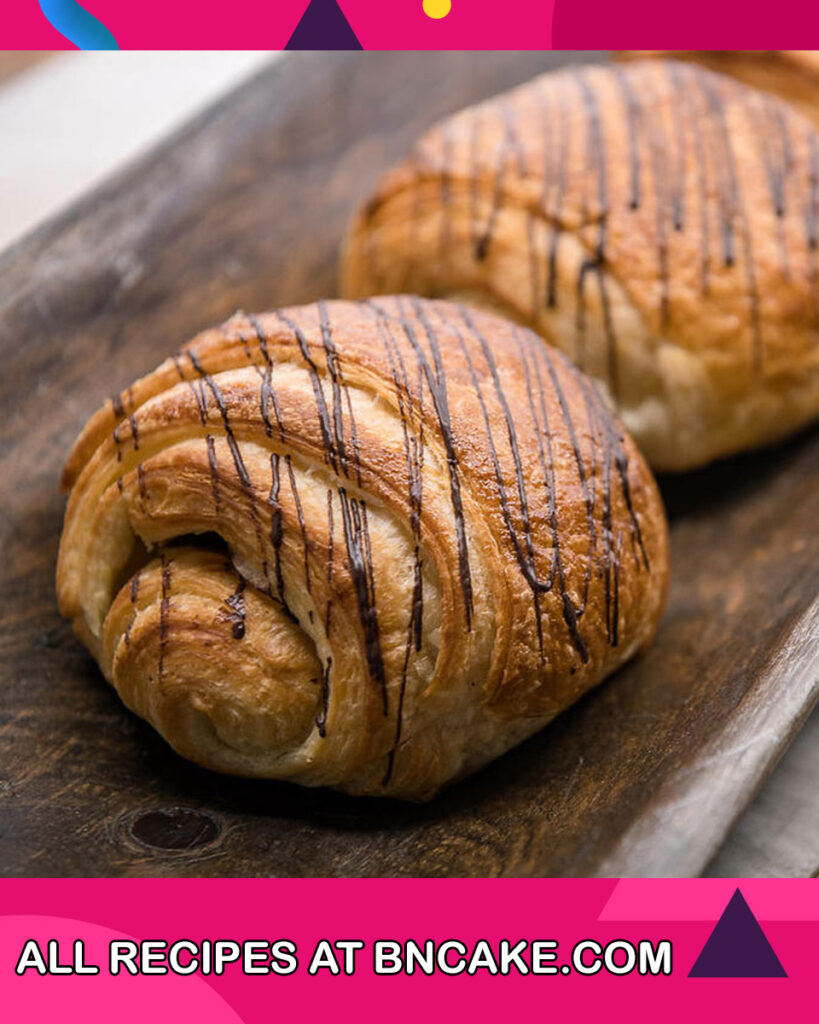
How To Store Cross Laminated Croissant
Proper storage is essential to maintain the freshness and texture of Cross Laminated Croissants. Here’s how to store them:
1. Room Temperature (Short-Term Storage):
- If you plan to consume the croissants within a day or two, you can store them at room temperature in an airtight container or a resealable plastic bag. This helps maintain their crispness and texture.
2. Refrigeration (Longer-Term Storage):
- For longer-term storage, place the croissants in an airtight container or resealable plastic bag and store them in the refrigerator. Refrigeration helps prevent the butter in the croissants from becoming rancid. They can be stored this way for up to 3-4 days.
3. Freezing (Extended Storage):
- If you want to store Cross Laminated Croissants for an extended period, freezing is the best option.
- Wrap each croissant individually in plastic wrap or aluminum foil to prevent freezer burn and moisture absorption.
- Place the wrapped croissants in an airtight container or resealable freezer bag.
- Label the container or bag with the date to keep track of freshness.
- Frozen croissants can be stored for up to 1-2 months.
4. Thawing:
- To enjoy frozen croissants, remove them from the freezer and let them thaw at room temperature for a few hours or overnight.
- You can also reheat them in a preheated oven (about 350°F or 175°C) for 10-15 minutes to restore their crispiness.
5. Avoid Moisture:
- Keep croissants away from moisture, as it can cause them to become soggy. Use airtight containers or bags to protect them.
6. Reheating:
- If you prefer your croissants warm and crispy, preheat your oven to 350°F (175°C) and heat them for 5-10 minutes until they are heated through and crispy again.
Properly stored Cross Laminated Croissants can be enjoyed even days after they are baked, provided you follow these storage guidelines. Whether you’re enjoying them fresh or reheating from the freezer, they can be a delightful treat any time you crave their buttery, flaky goodness.
Other Delicious Recipes you’ll like
- Easy Chocolate Croissant Recipe
- Cross Laminated Croissant
- How To Make Croissants
- Éclair Recipe
Tips And Tricks For Cross Laminated Croissant
Making Cross Laminated Croissants is a labor-intensive process, but with some tips and tricks, you can achieve the best results. Here are some helpful tips for baking perfect Cross Laminated Croissants:
1. Keep Ingredients Cold:
- Use cold butter for the butter layer, and ensure the laminated dough stays cold during the folding process. This helps create those distinct layers in the croissants.
2. Properly Measure Ingredients:
- Use a kitchen scale to measure ingredients accurately, especially the flours and butter. Precise measurements are crucial for consistent results.
3. Be Patient with the Dough:
- Allow the dough to rest and chill between folds. This resting period helps relax the gluten and ensures the croissants rise properly.
4. Practice Lamination:
- The lamination process is key to creating flaky layers. Roll out the dough evenly and distribute the butter layer uniformly. Fold with care to prevent air bubbles.
5. Avoid Overworking the Dough:
- Handle the dough gently and avoid overworking it. Overhandling can lead to tough croissants.
6. Use High-Quality Butter:
- Choose a high-quality, unsalted butter with a high fat content. The quality of the butter will significantly impact the flavor and texture of your croissants.
7. Shape Uniformly:
- When shaping croissants, try to make them as uniform as possible to ensure even baking.
8. Brush with Egg Wash:
- Use a beaten egg for the egg wash to give the croissants a beautiful golden sheen.
9. Preheat the Oven:
- Make sure your oven is fully preheated to the correct temperature before baking. This ensures even cooking and proper rise.
10. Bake on Parchment:
- Use parchment paper or silicone baking mats to line your baking sheets. This prevents the croissants from sticking and makes cleanup easier.
11. Rotate the Pans:
- Rotate the baking sheets halfway through the baking time to ensure even browning.
12. Serve Fresh:
- Cross Laminated Croissants are best enjoyed fresh from the oven or within a day or two of baking when they are at their peak in terms of flavor and texture.
13. Experiment with Fillings:
- Don’t hesitate to get creative with fillings. Whether sweet or savory, adding fillings can make your croissants even more delightful.
14. Practice Makes Perfect:
- Cross Laminated Croissants can be challenging for beginners. Don’t be discouraged if your first batch isn’t perfect. Keep practicing, and your skills will improve.
15. Enjoy the Process:
- Making croissants from scratch can be a labor of love. Enjoy the process, and savor the satisfaction of creating this classic pastry at home.
Remember that making Cross Laminated Croissants requires patience and practice. As you become more familiar with the process, you’ll develop your own techniques and perfect your croissants with each batch.

FAQs And Troubleshooting
1. Why didn’t my croissants rise properly during baking?
- Proper rising can be affected by various factors, including the temperature of your kitchen, the dough’s temperature, and the accuracy of your yeast. Ensure that you let the dough rise sufficiently during the initial proofing stage, and make sure the dough isn’t too cold when shaping the croissants. Additionally, check the expiration date on your yeast and proof it in warm milk before using it.
2. Why are my croissants dense and not flaky?
- Dense croissants can result from overworking the dough, not laminating it properly, or using the wrong type of flour. Be gentle with the dough, avoid overmixing, and follow the lamination steps carefully. Use a flour with an appropriate protein content, such as bread flour, for the best results.
3. How can I prevent my croissants from burning on the bottom?
- To prevent burning, use a light-colored baking sheet or place a second baking sheet underneath the first to insulate the bottom. Also, make sure your oven temperature is accurate and that you’re not placing the croissants too close to the oven’s heating element.
4. Why did my croissants turn out greasy?
- Greasy croissants can occur if the butter layer melts and escapes during baking. Ensure the laminated dough remains cold during the folding and rolling process, and don’t overfill the croissants with butter or fillings.
5. How do I fix croissants that are too dry or tough?
- Croissants that are too dry or tough may have been overbaked. To salvage them, you can brush them with a simple syrup (equal parts water and sugar heated until sugar dissolves) as soon as they come out of the oven to add moisture and flavor. Be careful not to over-bake your next batch.
6. Why did my croissants open up while baking?
- Croissants may open up while baking due to underproofing or not sealing the ends properly. Ensure you roll the croissants tightly and pinch the ends to seal them. Also, allow the shaped croissants to proof until they’re puffy before baking.
7. Can I use margarine instead of butter for laminating?
- While it’s possible to use margarine for laminating, it’s generally recommended to use high-quality butter with a high fat content (around 82%) for the best flavor and texture. Margarine has a different composition and can yield different results.
8. How do I store leftover croissants?
- Store leftover croissants in an airtight container at room temperature for a day or two. For longer storage, refrigerate them for up to 3-4 days, or freeze them individually wrapped for up to 1-2 months. Reheat in the oven or toaster before serving.
9. Can I make mini or smaller-sized croissants?
- Yes, you can make mini or smaller-sized croissants by cutting the dough into smaller triangles before rolling. Adjust the baking time accordingly, as smaller croissants will cook faster.
10. My croissants didn’t get that beautiful golden color. What can I do?
- To achieve a golden color, make sure to use an egg wash (beaten egg) before baking. Brush the egg wash evenly over the croissants for a beautiful shine and color.
Remember that perfecting the art of making Cross Laminated Croissants may take some practice, so don’t be discouraged by initial challenges. Troubleshoot any issues as you go and learn from each batch to improve your technique.
Nutrition Information
The nutrition information for Cross Laminated Croissants can vary based on factors such as size, fillings, and specific ingredients used in the recipe. However, here’s a general estimate of the nutritional content for a standard Cross Laminated Croissant (approximately 75 grams) without fillings:
Calories: Approximately 280-320 calories per croissant, Carbohydrates: Approximately 30-35 grams, Protein: Approximately 5-7 grams, Fat: Approximately 15-20 grams
Additional Information:
- The majority of the calories in a Cross Laminated Croissant come from carbohydrates and fat.
- Croissants are known for their flaky and buttery texture, which is a result of the high-fat content.
- The protein content in croissants is relatively modest, primarily coming from the flour and any added fillings.
- The calorie and nutritional content can increase significantly if you add sweet or savory fillings like chocolate, almond paste, or ham and cheese.
Keep in mind that these values are approximate and can vary based on the specific recipe and serving size. If you have dietary concerns or need precise nutritional information, it’s advisable to calculate the values based on the exact ingredients and quantities you use in your Cross Laminated Croissant recipe.


